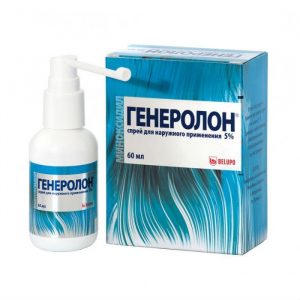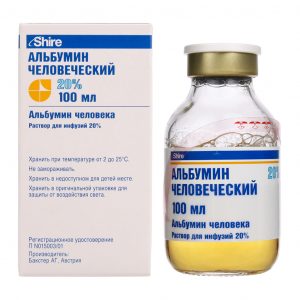Description
Release form
Dosage inhalation aerosol.
Packing
In a cylinder of 60 doses.
Pharmacological action
Alvesco – GCS for topical use in the form of inhalation. Cyclesonide exhibits a low affinity for glucocorticoid receptors.
After inhalation with the participation of enzymes it turns into the main metabolite in the lungs (descyclesonide, C21-desmethylpropionylcyclesonide), which has a pronounced anti-inflammatory activity and is therefore considered an active metabolite.
Cyclesonide suppresses inflammatory reactions in the respiratory tract and, thus, weakens the symptoms of bronchial asthma, improves lung function.
Contraindications
hypersensitivity to the drug
age up to 6 years.
Precautions: patients with active or chronic pulmonary tuberculosis, patients with bacterial, viral or fungal infections of the respiratory tract.
Pregnancy and lactation
No controlled studies in pregnant women have been conducted. However, after inhalation of the drug, the concentration of cyclesonide in the blood serum is very low, therefore, the effect on the embryo and potential toxicity affecting reproductive function are negligible.
Isolation of cyclesonide or its metabolites through breast milk has not been studied.
Like other inhaled corticosteroids, cyclesonide can be used during pregnancy and lactation as prescribed by a doctor if the expected therapeutic effect exceeds the risk of possible side effects.
Newborns from mothers treated with corticosteroids should be monitored by a doctor to exclude adrenal hypofunction.
Special instructions
Alvesco is not indicated for the treatment of asthmatic status or other acute episodes of asthma requiring intensive therapeutic measures.
The effect of inhaled GCS with prolonged use in children is not fully understood. The doctor should constantly monitor the growth of children taking GCS for a long period. If growth slows down, therapy should be reviewed to reduce the dose of inhaled corticosteroids. If possible, then to the smallest dose with which constant monitoring of asthma symptoms is maintained. The dose of Alvesco may be reduced in patients requiring oral administration of GCS.
For patients transferred from oral corticosteroids therapy to Alvesco inhalation treatment, a decrease in adrenal cortex function may persist for a considerable period of time after transfer. The possibility of developing unwanted effects from the use of oral corticosteroids may persist for some time after their cancellation. In such cases, it is recommended to monitor the reserve function of the adrenal cortex. The possibility of residual deterioration of the adrenocortical response in a critical situation (therapeutic or surgical) and in other individual cases that may be caused by a stress response should always be taken into account, as a result of which appropriate GCS treatment should be started.
In case of insufficient adrenocortical response or serious exacerbations, the dose of Alvesco should be increased if necessary, oral GCS should be used. In case of infection, antibiotics should be used. Paradoxical bronchospasm with increased wheezing and other symptoms of bronchial constriction that appear immediately after inhalation should be treated with a fast-acting bronchodilator, which usually leads to quick relief. The patient should be examined, and therapy with Alvesco should be continued only if, after careful consideration, the expected effect is higher than the possible risk. The relationship between the severity of asthma and the general predisposition to acute bronchial reactions should be taken into account.
Transfer of patients taking oral corticosteroids to Alvesco.
The transfer of patients who received oral GCS treatment to Alvesco and their subsequent management needs attention, as restoration of reduced adrenal function caused by prolonged systematic corticosteroids therapy may take some time.
In patients taking systemic corticosteroids for an extended period of time or at a high dose, suppression of adrenal function may be observed. Adrenal function in these patients should be monitored regularly, and the dose of systemic corticosteroids should be reduced gradually. After approximately one week, a gradual exclusion of systemic corticosteroids with a decrease in their daily dose by 1 mg of prednisolone or its equivalent may begin. For a maintenance dose of prednisolone in excess of 10 mg daily, carefully taken larger dose reductions over weekly intervals may be appropriate.
Some patients may feel unwell during discontinuation of the drug despite maintaining or even improving respiratory function. They need to be examined for adrenocortical insufficiency.
When transferring patients from systemic corticosteroids to inhalation therapy, allergic reactions may occur (e.g. allergic rhinitis, eczema), which were previously suppressed by systemic drugs. These allergies should be treated symptomatically with antihistamines and / or topical agents, including topical GCS.
Influence on the ability to drive a car or perform work that requires an increased speed of physical and mental reactions. There is no data on the effect of the drug on the ability to drive vehicles and mechanisms.
Drug Interactions
According to in vitro data, CYP3A4 is the main enzyme involved in the metabolism of the active metabolite of cyclesonide – M1 (descyclesonide) in humans.
In studies of the drug interaction between cyclesonide and ketoconazole, as a potent inhibitor of CYP3A4, the effect on the active metabolite descyclesonide increased by about 3.5 times, whereas no effect on cyclesonide was noted. Based on this, the simultaneous use of potential inhibitors of CYP3A4 and cyclesonide should be avoided.
A study of the interaction of cyclesonide and the erythromycin CYP3A4 substrate showed no interaction between them.
Composition
1 dose contains 80 mcg cyclone.
Excipients:
norflurane (HFA-134a) – 54.46 mg,
ethanol – 4.74 mg.
Dosage and Administration
For oral inhalation.
Alvesco should be taken for an extended period of time daily. The drug is dosed individually. The initial dose should be selected depending on the severity of the condition. When the desired clinical effect is achieved, the dose should be reduced to the minimum necessary to control the manifestations of the disease.
Adults, elderly patients and adolescents over 12 years of age
Mild to moderate asthma: the recommended daily dose is from 160 to 640 mcg, the dose of 640 mcg should be divided into 2 doses per day.
Severe asthma: can the dose be increased to a maximum of 2? 640 mcg daily.
An improvement in the onset of the disease occurs within 24 hours after taking Alvesco. It is assumed that the maximum effect of treatment – as with other inhaled corticosteroids – is achieved after 2-3 months of use of the drug.
Patients should not discontinue treatment, even in the absence of asthma symptoms.
Children over 6 years of age
The recommended daily dose is 80 160 mcg once or 80 mcg twice a day.
Alvesco can be used with or without a spacer. If the use of a spacer is necessary, it is recommended to use the AeroChamberPlus spacer.
Specific Advice for
There is no need to adjust the dose for elderly patients or patients with hepatic or renal failure.
Adults and adolescents taking oral GCS continuously
In patients with severe bronchial asthma who depend on oral GC therapy (eg, prednisone), the dose of Alvesco is 640 mcg twice a day. To transfer patients from oral corticosteroids to Alvesco, patients must be in remission. A dose of Alvesco (640 mcg twice daily) should be used for 10 days in combination with oral GCS. The dose of oral corticosteroids should then be gradually reduced every week to the lowest possible level, with a decrease in the daily dose of no more than 2.5 mg each time.
Side effects
In most cases, the side effects were mild and did not require discontinuation of the drug Alvesco.
– From the digestive system: sometimes (> 1/1000, <1/100) - nausea, vomiting, unpleasant taste rarely (> 1/10000, <1/1000) - abdominal pain, dyspepsia. – From the respiratory system: sometimes – dyspnea, cough after inhalation, paradoxical bronchospasm. – From the side of the central nervous system: sometimes – a headache. – From the side of the cardiovascular system: rarely – palpitations, arterial hypertension. – Dermatological reactions: sometimes – eczema and skin rash. – Allergic reactions: rarely – angioedema, hypersensitivity reactions. – Local reactions: sometimes – reactions at the application site, dryness at the application site. Other: sometimes – fungal infections of the oral cavity. Inhaled GCS can cause systemic effects, especially with prolonged use at high doses. Drug Interactions CYP3A4 is the main enzyme involved in the metabolism of the active metabolite of cyclesonide – M1 (descyclonazide). In studies of drug interactions between cyclesonide and ketoconazole, as a potent inhibitor of CYP3A4, the effect on the active metabolite descyclonazide increased by about 3.5 times, whereas there was no effect on cyclizonide. Based on this, the simultaneous use of potential inhibitors of CYP3A4 and cyclesonide should be avoided until the benefit outweighs the possible risk of developing systemic side effects of corticosteroids. A study of the interaction of cyclizonide and the erythromycin CYP3A4 substrate showed no interactions between them. overdose Acute overdose Symptoms: single dose inhalation of 2880 mcg ciclesonide was well tolerated in healthy volunteers. The potential for acute toxic effects following an overdose of inhaled ciclesonide is low. It is possible to increase the dryness of the mucous membrane of the mouth and throat, the sensation of irritation or sore throat, dysphonia. Treatment: There is no need for specific treatment after acute overdose. Chronic overdose Symptoms: no clinical signs of adrenal suppression were observed after prolonged administration of 1280 mcg ciclesonide. However, if exceeding the recommended dose continues for a very long period of time, some degree of adrenal suppression cannot be ruled out. Treatment: It is recommended to monitor adrenal function. Storage Conditions The product should be stored out of the reach of children at a temperature not exceeding 25 ° C. lekarstvennaja form aerosols for ynhalyatsyy Indications Indications Bronchial asthma Takeda GmbH, Japan




